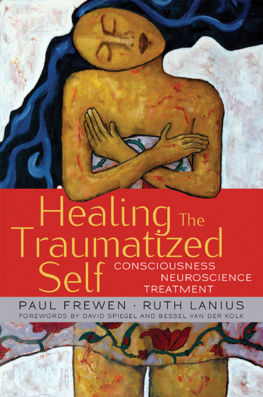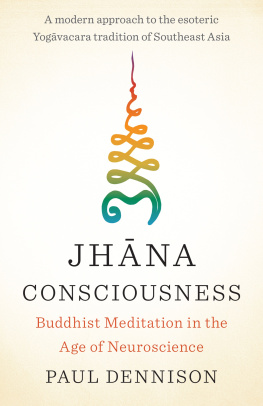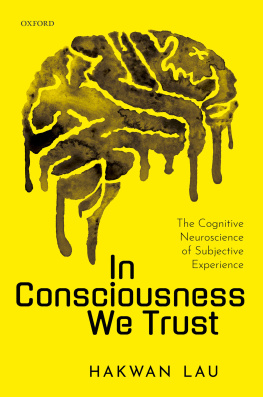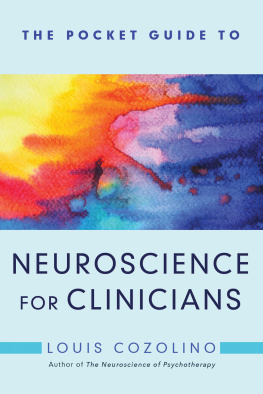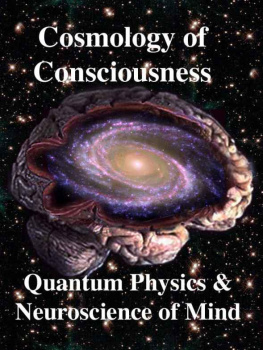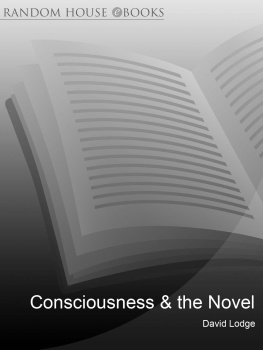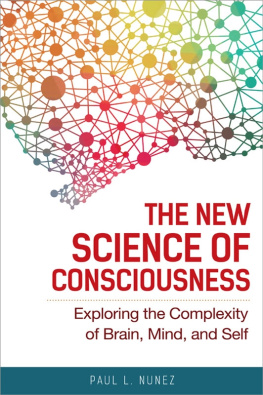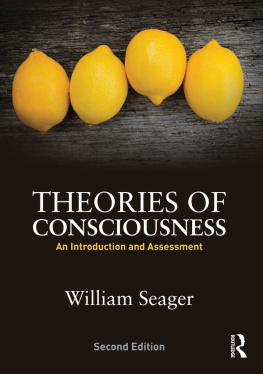Paul Frewen - Healing the Traumatized Self Consciousness, Neuroscience, Treatment
Here you can read online Paul Frewen - Healing the Traumatized Self Consciousness, Neuroscience, Treatment full text of the book (entire story) in english for free. Download pdf and epub, get meaning, cover and reviews about this ebook. year: 2015, genre: Science. Description of the work, (preface) as well as reviews are available. Best literature library LitArk.com created for fans of good reading and offers a wide selection of genres:
Romance novel
Science fiction
Adventure
Detective
Science
History
Home and family
Prose
Art
Politics
Computer
Non-fiction
Religion
Business
Children
Humor
Choose a favorite category and find really read worthwhile books. Enjoy immersion in the world of imagination, feel the emotions of the characters or learn something new for yourself, make an fascinating discovery.
- Book:Healing the Traumatized Self Consciousness, Neuroscience, Treatment
- Author:
- Genre:
- Year:2015
- Rating:3 / 5
- Favourites:Add to favourites
- Your mark:
- 60
- 1
- 2
- 3
- 4
- 5
Healing the Traumatized Self Consciousness, Neuroscience, Treatment: summary, description and annotation
We offer to read an annotation, description, summary or preface (depends on what the author of the book "Healing the Traumatized Self Consciousness, Neuroscience, Treatment" wrote himself). If you haven't found the necessary information about the book — write in the comments, we will try to find it.
Paul Frewen: author's other books
Who wrote Healing the Traumatized Self Consciousness, Neuroscience, Treatment? Find out the surname, the name of the author of the book and a list of all author's works by series.
Healing the Traumatized Self Consciousness, Neuroscience, Treatment — read online for free the complete book (whole text) full work
Below is the text of the book, divided by pages. System saving the place of the last page read, allows you to conveniently read the book "Healing the Traumatized Self Consciousness, Neuroscience, Treatment" online for free, without having to search again every time where you left off. Put a bookmark, and you can go to the page where you finished reading at any time.
Font size:
Interval:
Bookmark:

Our normal waking consciousness, rational consciousness as we call it, is but one special type of consciousness, whilst all about it, parted from it by the filmiest of screens, there lie potential forms of consciousness entirely different.... We may go through life without suspecting their existence; but apply the requisite stimulus, and at a touch they are there in all their completeness, definite types of mentality which probably somewhere have their field of application and adaptation. No account of the universe in its totality can be final which leaves these other forms of consciousness quite disregarded.
William James (1902/2002, pp. 373374)
T HIS CELEBRATED PASSAGE FROM William James, who is by many accounts the founding father of philosophical psychology and the psychological study of altered states of consciousness, describes his conviction that normal waking consciousness represents but a fraction of the range of potential modes of subjective awareness available to us. Worth emphasizing for present purposes are three points. First, James distinguishes between a normal waking or rational form of consciousness and various other forms of consciousness. These other forms of consciousness are thus, by definition, not considered normal, and are nowadays typically referred to as altered states of consciousness (e.g., Vaitl et al., 2005). Second, James described altered states of consciousness as potentiated by specific psychophysiological conditions: apply the requisite stimulus, and at a touch they are there in all their completeness. Third, James suspected that our capacity to experience altered states of consciousness is likely purposeful. In other words, he assumed that altered states of consciousness probably serve some yet unknown adaptive function, thus referring to them as definite types of mentality which probably somewhere have their field of application and adaptation.
The passage above was taken from Jamess famous treatise on the Varieties of Religious Experience. In that text, his focus was on positive, spiritual states of mind that might be loosely labeled ecstatic, transcendent, and/or mystical in nature. Nevertheless, James also examined the sometimes frightening and melancholic character of religious experiences. Moreover, James held that the examination of psychopathology was key to understanding the structure and functions of human subjectivity. Therefore, in Varieties James also called for us to address ourselves to the unpleasant task of hearing what the sick souls... have to say of the secrets of their prison-house, their own peculiar form of consciousness (p. 136).
Answering that call, in the present text we address the imprisoned states of mind of the severely psychologically traumatized person. We describe how overwhelming experiences, including extreme acts of violence, torture, and abuse, often occurring in or preceded by a developmental context of serious disruption in attachment relationships between a child and his or her early caregivers, can alter four dimensions of consciousness in trauma survivors: the consciousness of (1) time, (2) thought, (3) body, and (4) emotion. It has been suggested that the principal function of these trauma-related altered states of consciousness (TRASC) may be to make the survival of overwhelming experiences more tolerable, that is, to afford mental escape when physical escape is not possible. However, the persistence of TRASC in the long-term aftermath of trauma is typically regarded as a marker of psychopathology. We also recommend a methodology for studying, assessing, and treating TRASC in trauma survivors: neurophenomenology. This methodology integrates the study of an individuals first-person experience with objective neurophysiological measures. Finally, we present some of the more severe case examples of TRASC that we have encountered in our research and clinical practices with traumatized persons throughout the text.
We begin in through which TRASC develop within the context of exposure to psychological trauma.
In we overview the methodological approach that we recommend for the systematic study of psychologically traumatized forms of consciousness, namely, neurophenomenology. In brief, neurophenomenology integrates the systematic investigation of moment-to-moment first-person subjective experience with neurophysiological recordings as dual interactive and integrative means for systematically describing the structure, processes, and function of human consciousness. For example, people may be encouraged to elaborate, moment by moment, on their first-person experience of remembering or reliving a traumatic event while neurophysiological measurements are recorded; interpretation of the psychological significance of the neurophysiological measures would then take into consideration peoples first-person experiential accounts of the memory.
The neurophenomenological examination of consciousness in its normal and abnormal forms, as impacted by severe stress, should bring into clearer view the other side of Jamess filmiest of screens, wherein we posit the nature of the subjectivity experienced by the chronically traumatized person is often to be found. However, we explicitly note as a limitation that the neurophysiological measures we discuss and associate with phenomenology in this text are in nearly all cases limited to neuroimaging. In other words, studies conducted at genetic, molecular, neuroendocrine, and neuroimmunological levels of analysis receive little to no attention herein. This is partly based on the fact that neuroimaging represents the research methodology with which we have the most personal expertise. More substantively, however, given that neurophenomenology seeks to investigate the intercausality between moment-to-moment first-person subjective experience with neurophysiological recordings, coupled with the fact that measures of moment-to-moment changes in molecular and neurochemical markers are largely unavailable in humans, empirical investigations at these levels of neurobiological analysis are yet to be conducted.
we consider the process of trauma recovery from dissociative trauma-related altered states of consciousness (TRASC) through to healthy, integrated senses of self as it takes place in trauma-focused psychotherapy. Note further that we include an Appendix that provides further clinical examples of TRASC of time, thought, body, and emotion in response to interviews we conducted with trauma survivors. We emphasize that these clinical examples represent relatively severe and prototypic cases.
Throughout this text we argue that both the treating clinician and researcher alike should distinguish between two general forms of consciousness that frequently present clinically within persons with trauma-related disorders: (1) states of distress that are not intrinsically dissociative, as such, by parsimony, presumed to maintain normal waking consciousness (NWC); and (2) states of distress that are quintessentially dissociative in nature, representing as such trauma-related altered states of consciousness (TRASC). It may be that distress presenting in the form of NWC versus TRASC represents qualitatively or categorically distinct forms of distress, thus differing in kind in the philosophical sense. As such, the two states may well be parted by what James called the filmiest of screens. Nevertheless, at present we do not wish to rule out the theoretical possibility that these states differ more subtly, only in degree. In any case, the major thesis of this text is that theory, research, and clinical observations collected to date support the validity of distinguishing between dissociative and non-dissociative presentations of distress, only the former defined by TRASC.
Next pageFont size:
Interval:
Bookmark:
Similar books «Healing the Traumatized Self Consciousness, Neuroscience, Treatment»
Look at similar books to Healing the Traumatized Self Consciousness, Neuroscience, Treatment. We have selected literature similar in name and meaning in the hope of providing readers with more options to find new, interesting, not yet read works.
Discussion, reviews of the book Healing the Traumatized Self Consciousness, Neuroscience, Treatment and just readers' own opinions. Leave your comments, write what you think about the work, its meaning or the main characters. Specify what exactly you liked and what you didn't like, and why you think so.

